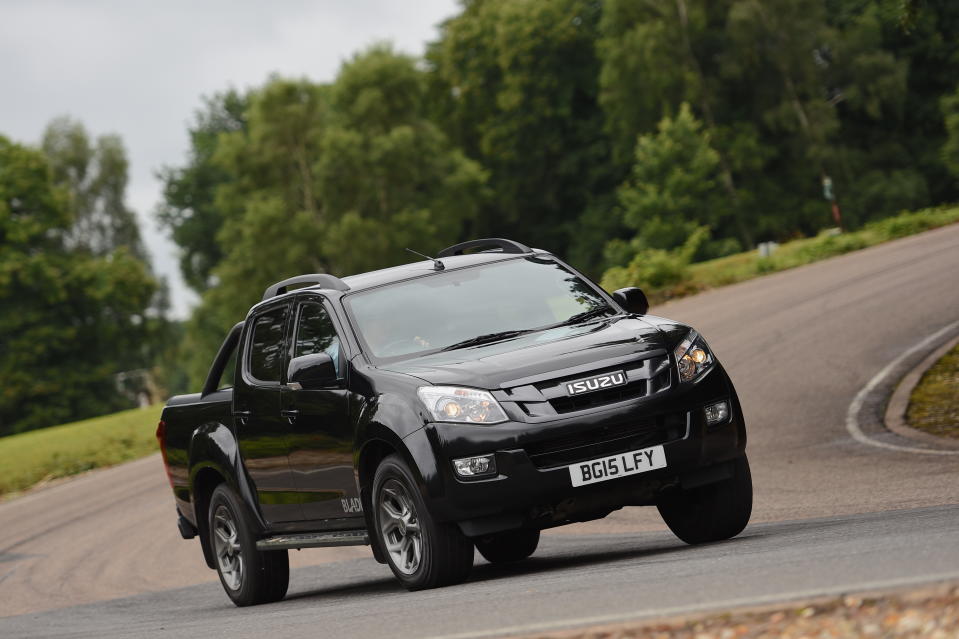Isuzu D-Max

The pick-up market is going through something of a renaissance, with three of the biggest names in the sector all launching new models and others primed to join the party.
The Nissan Navara NP300, Ford Ranger and the Toyota Hilux have all taken the plaudits for moving the rugged vehicle game on, while the Volkswagen Amarok has had a facelift and its engine uprated to a 3.0-litre V6 diesel unit.
Waiting in the wings is the Renault Alaskan and Fiat Fullback which are set to join the fray in 2017, while Mercedes-Benz has also previewed its idea of a pick-up with the X-Class, meaning that buyers have never been so spoilt for choice - making it doubly strange that we are driving one near the end of its production cycle.
The Isuzu D-Max has been around since 2012, and while the name is synonymous with rugged workhorses, some of the newer kids on the block are starting to make the model look a little archaic.
Nonetheless, we are trying the range-topper, priced at £31,141, which Isuzu maintains is the premium pick-up of choice, with enough luxury and features to stand out from the more workaday options.
The Isuzu D-Max range is split into two – the Utility range consisting of four predominantly workhorse models, mainly distinguished by their bodystyles – a two- and four-wheel drive single cab, an extended cab and a double cab variants.
Those looking for a touch more luxury and convenience have the Premium range to choose from, which includes the Eiger, Yukon, Utah and Blade – all of which are only available as a double cab bar the Yukon which can be had as an extended cab too.
Inside the entry-level Eiger you will find air conditioning, electric windows and a stereo system with USB and Bluetooth connectivity. Upgrade to the Yukon and you will find a leather clad steering wheel, interior lighting and cruise control, while the Utah adds climate control, heated front seats and a leather upholstery.
On the face of it the range-topping D-Max Blade doesn’t disappoint; it includes such luxuries as a reversing camera, climate control, heated front seats, and leather upholstery, as well as a fully loaded eight-speaker Pioneer infotainment system with a 7.0in screen.
Inside, the Isuzu doesn't quite live up to the almost SUV-type feel being evinced by range-topping versions of its major rivals. The dashboard is dominated by tough, hard plastics, which aren’t appealing to touch and feel rather out place in something staking a claim at the pricier end of the segment. The controls are kept to a minimum but are chunky and easy to use, while the Pioneer infotainment has an aftermarket look about it and tends to chug through its functions.
The 2.5-litre four-cylinder diesel engine develops 160bhp and 295lb ft of torque, but what it really produces is agricultural clatter (to go with a high level of wind noise) - and plenty of suitably grunty low-down drive. Peak twist is limited to between 1400 and 2000rpm, endowing the D-Max with plenty of job-done energy, while also ensuring that you'll be changing ratio a lot to keep it on song.
To do so, you'll be working the long-throw manual 'box hard - a job not made easier by a general reluctance to shift smoothly. Physical labour, though, is Isuzu's speciality. The D-Max will haul just over a tonne - more than most of its newer rivals - and is rated to tow a braked trailer up to 3500kg. That's more than the latest Toyota Hilux.
On the road, the Isuzu’s weighty steering makes negotiating tight streets and car parks trickier than some of its contemporaries. The ride is bouncy and the leaf springs cause the unladen tail to feel quite skittish, which is to be expected. Heavy thuds at the rear of the D-Max can resonate uncomfortable vibrations through the seatbacks when travelling over larger protrusions or speed bumps.
At more than £31,000, the cost is a hefty one for a pick-up that is showing its age compared with its closest rivals. Familiar options like the Hilux and the Mitsubishi L200 can be had in their priciest formats for less outlay, while even the more powerful 3.2-litre Ford Ranger Wildtrak is a mere £200 more expensive. For the money, the shortfall in wider sophistication is at times glaring.
Nevertheless, in terms of raw capability, the D-Max still comfortably holds its own. Only the Navara is on par with its hauling ability, and for some that will remain a standout advantage. Our advice? Consider the Blade's more affordable range mates before making a decision.
]]>

 Yahoo Autos
Yahoo Autos 